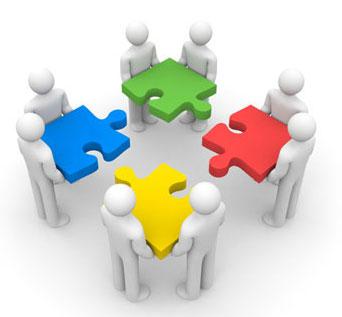
The second theme of PRINCE2 is that of organisation. This sets out the “who” of accountability and responsibility for delivering to the three primary interests of a PRINCE2 project: the business, the user, and the supplier. On the project board:
- The business interests are represented by the executive (customer)
- The senior user is responsible for ensuring the product deliverables are meeting stated needs
- The supplier represents the interests of those producing the project products
The project manager is authorised by the project board to manage the project on a day-to-day basis.
To achieve expected success, each project team should:
- have business, user and supplier representation
- have defined responsibilities for directing, managing, and delivering the project
- have regular reviews of the project to check that all is on track
- have an effective strategy to manage communication flows to and from stakeholders
In other words, each project must have direction, management, control and communication.
Roles, not persons
When discussing responsibilities within the context of a PRINCE2 project, it’s important to recognise that in its organisation PRINCE2 defines responsibilities in terms of roles and not persons. These roles are then assigned to the most appropriate person.
Therefore, a single person could have more than one role; and roles can be shared by more than one person. For example, in smaller projects the role of project support could be assigned to the project manager. In larger projects, the role of project support could be shared by more than one person.
How project management structure helps PRINCE2 organisation
There are four levels of project management structure. These are:
- Corporate or Program Management
- Directing a Project
- Managing
- Delivering
Corporate or program management sits outside the project management team. It is responsible for commissioning the project and identifying the executive. It decides how the project board will keep it updated, and also defines the project tolerances.
Below the level of program management, the project team has responsibility for directing, managing and delivering:
· Delivering
It is the project board that must direct the project. It is ultimately accountable for project success. Its responsibilities include:
- Approving resources
- Authorising change request and tolerance deviations
- Approval of stage completions, and authorisation of progress to the next stage
- Communication with other stakeholders
· Managing
It is the project manager who is responsible for the day-to-day management of the project. Their prime responsibility is to make certain that the project produces the required products to meet the project goals – time, cost, scope, risk, and benefits.
· Delivery
Project team members are responsible for delivering the project products to a certain quality, within a specific time, and within a set cost. Team managers may be given the authority to create plans and manage teams with these goals.
A word about communication
The organisation theme also includes stakeholder engagement. All stakeholders can have a significant impact on how the project is run. The project manager must therefore understand who these stakeholders are, and create a strategy of stakeholder engagement. Communication is key.
In our next blog, we’ll examine the theme of quality in PRINCE2 projects. In the meantime, don’t hesitate to contact us:

